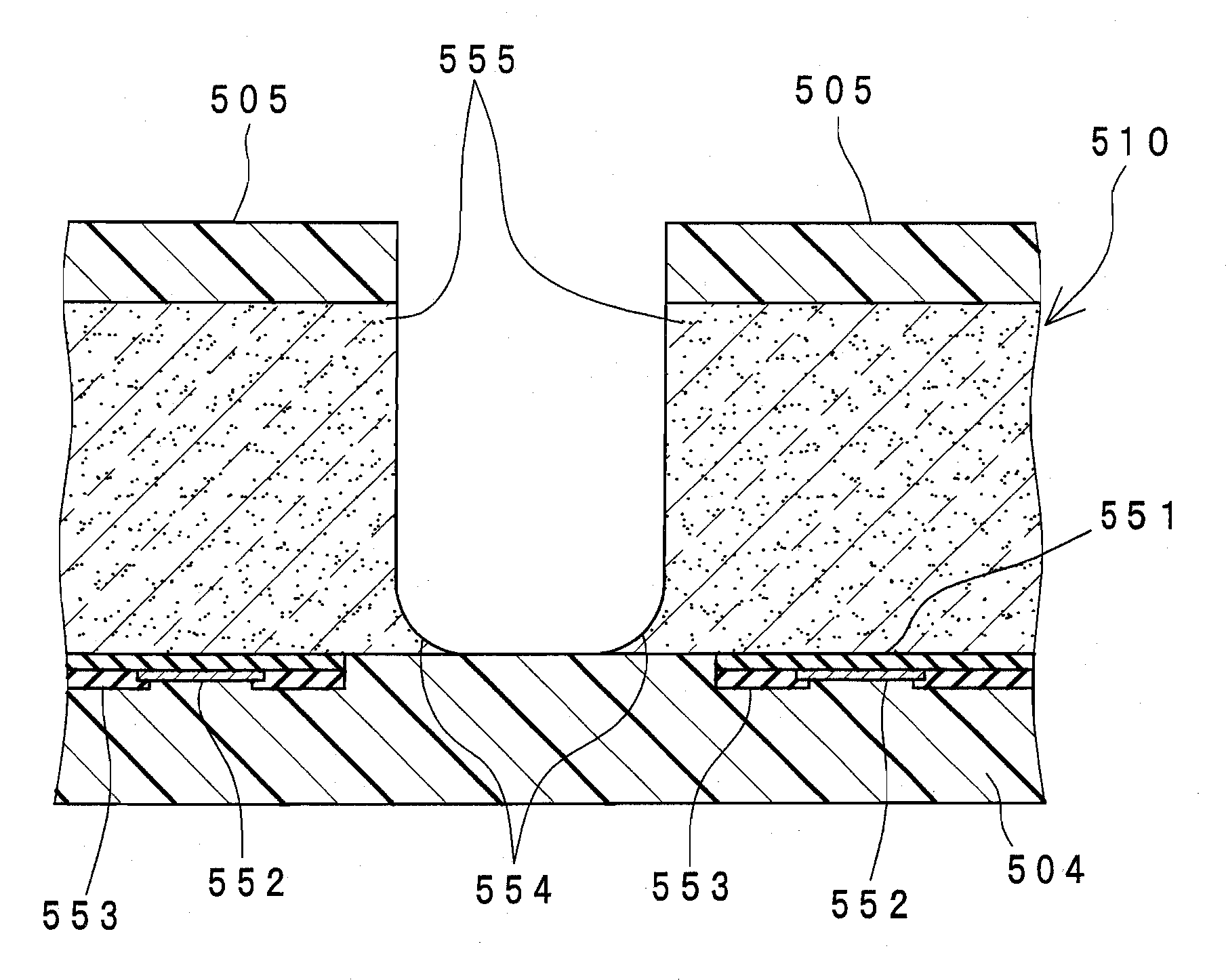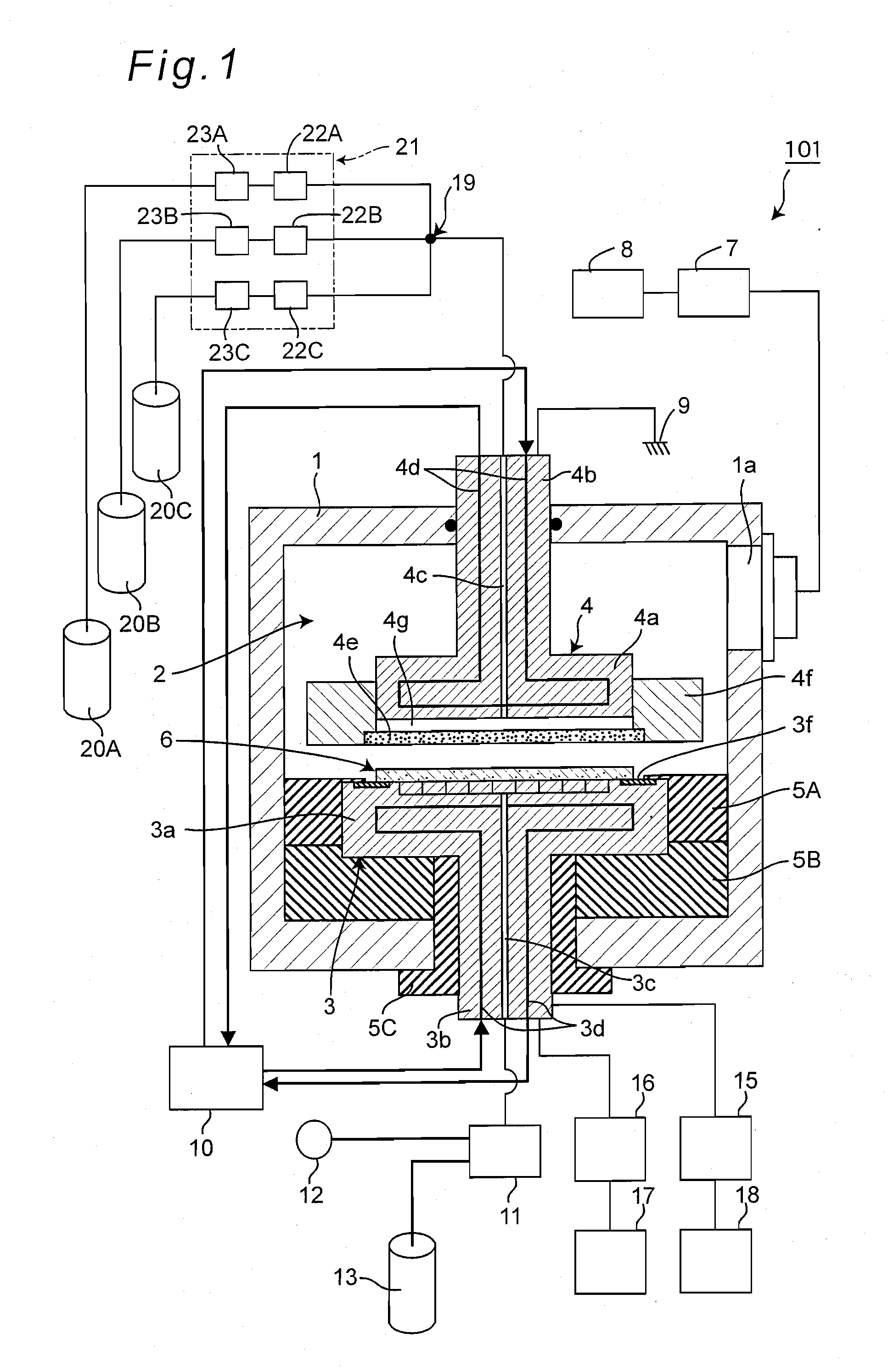Manufacturing method for semiconductor chips
a manufacturing method and semiconductor technology, applied in the direction of semiconductor devices, basic electric elements, electrical equipment, etc., can solve the problems of increasing the difficulty of plasma ions reaching the etching bottom portion, reducing the transverse rupture strength of the semiconductor chip, and increasing the cost of the whole plasma dicing processing. , the effect of low cost efficiency
- Summary
- Abstract
- Description
- Claims
- Application Information
AI Technical Summary
Benefits of technology
Problems solved by technology
Method used
Image
Examples
first embodiment
Construction of Plasma Processing Apparatus
[0136]FIG. 1 shows a schematic structural view that schematically shows the construction of a plasma processing apparatus 101 used for dividing a semiconductor wafer by a manufacturing method for semiconductor chips of the first embodiment of the present invention. It is noted that FIG. 1 is a schematic structural view showing a longitudinal sectional view of the plasma processing apparatus 101. The plasma processing apparatus 101 is the apparatus that manufactures semiconductor chips by dividing a semiconductor wafer, on the circuit-formation-face (first surface) of which a plurality of semiconductor devices are formed, into individual pieces of the semiconductor chips that include the semiconductor devices.
[0137]Moreover, in a series of semiconductor chip manufacturing processes as described above, a protective sheet made of, for example, a material that is less plasma etchable than silicon that is the principal material of the semiconduc...
second embodiment
[0228]The present invention is not limited to the above embodiment but allowed to be put into practice in various modes. For example, a manufacturing method for semiconductor chips according to the second embodiment of the present invention is described below with reference to the schematic explanatory views shown in FIG. 18, FIGS. 19A and 19B, FIGS. 20A and 20B and FIGS. 21A and 21B.
[0229]The manufacturing method for semiconductor chips of the present second embodiment differs from the first embodiment in the point that a polyimide (PI) film is used as the insulating film instead of using the silicon oxide film 35 as the insulating film formed in the portions that correspond to the dividing regions R2 as in the semiconductor wafer 6 of the first embodiment. Only the different point is described below. The fact that the plasma processing apparatus 101 used in the first embodiment is similarly used by the manufacturing method for semiconductor chips of the present second embodiment i...
modification example of second embodiment
[0239]Although the case where the polyimide film 146 formed as the surface protection film is used as the insulating film placed in the dividing regions R2 has been described above, the present second embodiment is not limited only to the case. It may be a case where, for example, a silicon nitride film formed of silicon nitride (Si3N4) is used as the surface protection film in place of such a case. The case where the silicon nitride film is used is described below as a semiconductor chip manufacturing method according to a modification example of the present second embodiment. Moreover, for the description, a flow chart showing the procedure of the semiconductor chip manufacturing method is shown in FIG. 22, and a schematic explanatory view showing a state in which a notch formation process and a silicon-nitride film (insulator) removal process are concurrently carried out is shown in FIG. 23.
[0240]First of all, as shown in the flow chart of FIG. 22, the loading of a semiconductor ...
PUM
 Login to View More
Login to View More Abstract
Description
Claims
Application Information
 Login to View More
Login to View More - R&D
- Intellectual Property
- Life Sciences
- Materials
- Tech Scout
- Unparalleled Data Quality
- Higher Quality Content
- 60% Fewer Hallucinations
Browse by: Latest US Patents, China's latest patents, Technical Efficacy Thesaurus, Application Domain, Technology Topic, Popular Technical Reports.
© 2025 PatSnap. All rights reserved.Legal|Privacy policy|Modern Slavery Act Transparency Statement|Sitemap|About US| Contact US: help@patsnap.com



